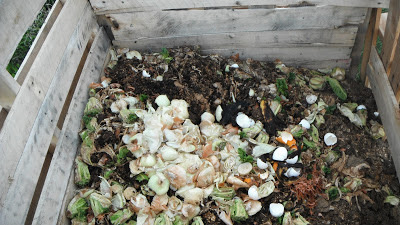For the active composter there are a few key parts of the composting process that they will need to keep
an eye in order to help the compost along in the most efficient way. What exactly those parts are can be
a subject of much heated discussion but in general most people that deal with compost agree on the
following four.
• Temperature
• Material type and ratio
• Moisture level
• Aeration or oxygen in the pile
Having these four aspects of composting in sync can lead to producing quality compost in a efficient and predictable manner.
Which for anyone that needs or wants compost on a larger scale it is vitally important to fully understand what the four elements of composting above can do to your pile if they are not managed correctly.
The element I will be discussing in this article is the topic of moisture level or water content of the pile.
Water in a compost pile is like water in the rest of the world it is the stuff that makes the whole thing
work. To dry of a pile and your microorganisms either cannot do their job or simply will not even be in
the pile because it is to inhospitable for them. To wet on the the other hand and again you will have
compost gone wrong. The type of organisms we want doing our compost are the aerobic or air needing
microorganisms. If your compost it to wet they literally can't breath and that doesn’t help you make
good compost.
Signs of to dry of compost would include:
• not heating up
• poofs of dust when you add material :)
• little change in the pile as time passes
Signs of to wet compost would include:
• Bad smell like rotten eggs
• pooling water
• water draining from bottom of pile
Fixing dry compost is fairly easy since all you have to do is either add material that contains a lot of
moisture like melon rinds or other watery vegetables or simple take the hose and add some water.
Compost will be at the perfect moisture level when you grab a handful of the finished product and
squeeze and only a drop or two will come out between your fingers.
 Drying a compost out can be a little tricky depending on what you have to deal with. In drier climates
Drying a compost out can be a little tricky depending on what you have to deal with. In drier climates like the Great Plains and desert regions of the US simply turning it over and adding more dry Browns
to the mix will usually do the trick after a few days. But if you live in the rainier parts of the country
like the Pacific NW and the East Coast you might have to do the above as well as cover the compost
with some type of shelter or tarp. It may seem like overkill to cover rotting organic matter up but if it
gets to wet it can cause issues with smell and insects in your pile.
Maintaining the Right Moisture
Keeping a pile at the right moisture is paramount for quick and clean turn around on compost production. Its fairly easy to do as long as you keep in mind what kind of material you are putting in the pile and what moisture nature is adding on its own. If you are adding a lot of juicy veggie scraps it would be prudent to add dry leaves or grass along with it to balance out the extra water. Also a weekly check with you hand is never a bad idea. This means you will have to stick you hand into the compost pile a varying depths and pull up some material and give it a good squeeze. If a little water comes out between your fingers than you are good to go. To dry and no water will come out and to wet and you'll swear you have the Mississippi coming out between your fingers. Like everything else in active composting it is all about paying attention and fixing what is wrong quickly. By making sure everything is doing what its suppose to do you will ensure that your pile goes on making dirt like a champ.


